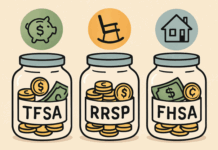
The most lucrative fintech strategy of 2025 isn’t disruption—it’s partnership. Just ask Priority, whose 10.7% Q1 EBITDA growth suggests banks and fintechs are better together than apart.
A decade ago, some predicted that fintechs would render banks obsolete. Startup pitch decks painted a world where agile disruptors would “eat the financial world” while legacy institutions faded. But after billions in venture capital and a rapidly evolving regulatory landscape, that story has shifted.
Priority offers a case study in a different approach. Rather than trying to replace banks, the company has built its $135 billion annual transaction volume by helping them operate more effectively.
“Banks have survived world wars, depressions, and massive technological shifts,” says Priority CEO Thomas Priore in an exclusive interview. “The smartest play was never to replace them but to enhance what they already do well.”
“We’ve been very intentional about the differentiation of our platforms and stability of our bank partners, building with a long-term purpose in mind,” Priore explained during his company’s Q1 2025 earnings call, highlighting the company’s collaborative rather than disruptive approach to banking partnerships.
Thomas Priore’s Vision: The Compliance Advantage
The pivot to bank collaboration isn’t merely strategic—increasingly, it’s existential. Regulatory pressure has created what industry insiders call a “partner or perish” environment for growth-stage fintechs.
According to a recent American Bankers Association report, federal agencies issued over 45 cease-and-desist orders related to third-party risk management between mid-2023 and mid-2024. The message from Washington is unmistakable: innovation without compliance is a non-starter.
Priority’s approach turns this potential liability into a competitive edge. The company maintains money transmitter licenses in all 50 states—an expensive and administratively complex undertaking that creates a moat against less disciplined competitors.
This deliberate focus on compliance has positioned Priority to benefit while less prepared competitors face overwhelming challenges. “We’re positioned to benefit from the fallout of some of the banking and service providers who are just not viable in the current regulatory environment,” Thomas Priore explained to analysts.
The Financial Case for Collaboration
The collaborative model isn’t just surviving; it’s thriving. Priority’s Q1 2025 numbers tell the story: $224.6 million in revenue (up 9.2% year-over-year) and a 170-basis-point expansion in adjusted gross profit margin to 38.9%.
“We’re seeing validation in every segment of our business,” says Priore. “Our SMB division processed over $15 billion in merchant bankcard volume last quarter, while our enterprise products like CFTPay are growing their customer base by double digits.”
This performance isn’t an outlier. According to McKinsey, bank-fintech collaborations have increased by nearly 70% over the past three years. Notably, these aren’t merely vendor relationships but strategic partnerships built around complementary capabilities.
For banks, these partnerships provide access to innovation without the organizational trauma or expense of internal development. For fintechs, they unlock distribution at scale and a regulatory framework that might otherwise take years to build independently.
How Thomas Priore Reimagined the Value Exchange
The fintech-bank relationship has undergone a profound evolution from reluctant accommodation to strategic synergy. The payments ecosystem, once viewed by banks as infrastructure cost, has been reconceptualized as a strategic asset that drives deposit growth and non-interest income.
“History is coming full circle,” observes Priore. “Two decades ago, banks were shedding payment processing capabilities. Today, they’re recognizing that payments aren’t just transactions—they’re the foundation of a primary banking relationship.”
This shift fundamentally alters the economics of collaboration. Banks increasingly see payment relationships as sticky, fee-generating customer touchpoints rather than commoditized services.
Thomas Priore explained this value proposition during the earnings call: “Our tightly coupled platform creates two important benefits for Priority’s long-term prospects. First, it allows our partners to choose your adventure, as we like to say, and evolve their offering to respond to opportunities as we add features in collaboration with their goals. Both parties have a clear line of sight to quantify and access revenue growth opportunities. This creates loyalty and gives us the ability to grow with our partners.”
Priority’s unified commerce platform exemplifies this new value exchange. Beyond processing payments, the system enables businesses to manage $1.3 billion in account balances through a single interface—creating a seamless experience that neither a traditional bank nor a stand-alone fintech could easily replicate.
Priority’s Operational Consistency Drives Scale Economics
A key challenge for bank-fintech partnerships has historically been operational complexity. Each new partnership required custom integration points, specialized compliance reviews, and bespoke operational procedures—creating friction that limited scalability.
Thomas Priore’s team has architected Priority’s approach to eliminate these bottlenecks. During the Q1 2025 earnings call, he detailed the company’s methodology: “By maintaining operational workflow consistency across implementation in diverse industry segments, we can clearly identify our operational metrics in key areas like compliance, payment operations, risk, application support, and the like to ensure that we scale cost-efficiently.”
This standardized yet flexible architecture allows Priority to onboard new bank partners and customer segments without the typical scaling challenges that plague some fintech-bank relationships. The approach brings together the reliability that banks require with the innovation that fintechs deliver.
The Integration Horizon
Industry analysts are tracking a new frontier: the functional disappearance of boundaries between bank and fintech operations. As these partnerships mature, the distinction between where bank services end and fintech capabilities begin is becoming irrelevant to the end customer.
“Financial services are heading toward invisible integration,” Priore notes. “The days of clunky hand-offs between banking platforms and payment processors are ending. What’s emerging instead are unified experiences where everything just works.”
Artificial intelligence is accelerating this convergence. Rather than pursuing AI as a branding exercise, Priority is deploying it pragmatically to enhance risk modeling, optimize working capital, and streamline merchant onboarding.
“We measure AI impact in business outcomes, not headlines,” says Priore. “Better prediction models let us approve merchants faster and manage risk more precisely. That translates directly to revenue growth and customer satisfaction.”
Thomas Priore’s Vision for the Collaborative Future
As economic pressures mount, the collaboration model appears increasingly resilient. Priority projects 2025 revenue between $965 million and $1 billion—growth of 10-14% despite broader market uncertainty.
“Our customers and current market conditions reinforce our belief that systems facilitating payments and banking solutions to accept and distribute funds in multi-party environments will be critical as businesses put greater demands on software and payment solution providers to unlock value in existing and developing channels,” Priore emphasized during the earnings call.
The trajectory suggests a financial services landscape increasingly dominated by hybrid models rather than pure-play disruptors or status quo incumbents. Companies that mastered the partner approach early, like Priority, may have established an insurmountable lead in the race to define next-gen financial services.
The fintech revolution did arrive, transforming how financial services operate. But rather than replacing banks as many predicted, what emerged instead—a more pragmatic fusion of banking stability and technological agility—may ultimately deliver more value to businesses and consumers alike.
“Disruption makes for great headlines,” Thomas Priore says. “But evolution often creates more durable businesses.”
To learn more about Priority’s banking partnership solutions, visit prioritycommerce.com/solutions/banking-and-treasury-solutions.
Find a Home-Based Business to Start-Up >>> Hundreds of Business Listings.













































